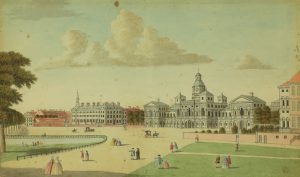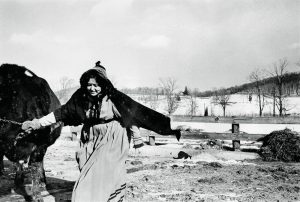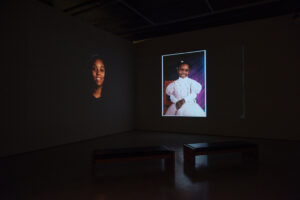This exhibition features two women’s viewpoints regarding the War of 1812 and is timed to coincide with the province-wide recognition, beginning in 2012 and continuing through 2014, of 200 years of peace since this conflict. In histories of art and war, the experiences of women have tended to be overlooked, and this exhibition contributes to a greater understanding of how gender has shaped the writing of history. The early 19th-century painter Catherine Reynolds lived through the War of 1812 in Amherstburg, Ontario, and the 20th-century Toronto artist Joyce Wieland returned to the subject a century-and-a-half later.
The aesthetic responses of these two women to this war could hardly have been farther apart. Joyce Wieland asserted her feminist perspectives in the 1960s and 1970s to look back on the War of 1812 and recover the important roles and experiences of women. She rediscovered Laura Secord’s 30 km historic trek from Queenston to Beaver Dams, near Thorold, Ontario, to warn James FitzGibbon of the British Military that the Americans were planning to attack his outpost on June 23, 1813. Catherine Reynolds, living in the midst of wartime, painted the subject of war completely out of her pictures to depict pastoral views of far-away European locations. Even though her father and two of her brothers were military men (one of which she was living with), her family’s direct involvement in the war effort was clearly not a subject she chose to paint.
In short, Reynolds approach to war was kept at arm’s length while living through it, whereas Wieland’s approach reflected on the subject of wartime to recover important histories of women’s roles in it. Reynolds took up the practice of copying from European prints to gain understandings of perspective. Although without formal training in the visual arts, Reynold’s aesthetic was informed by traditions of the British Picturesque, whereby the artist used a tonal palette to create harmonious and pleasing imagery of wilderness and rural landscapes. Despite their differing interpretations of what mattered during wartime and what could be remembered from it, Wieland and Reynolds asserted two important female viewpoints that enable wider recognition of women’s experiences and histories.
This exclusive AGW exhibition includes works from Windsor’s Community Museum, the Canada Council Art Bank and the AGW collection, and has been supported by the following organizations:
The Canada Council for the Arts and the Canada Council Art Bank
Canadian Heritage
City of Windsor
Windsor Community Museum
The Ontario Arts Council
The Windsor-Essex Community Foundation







